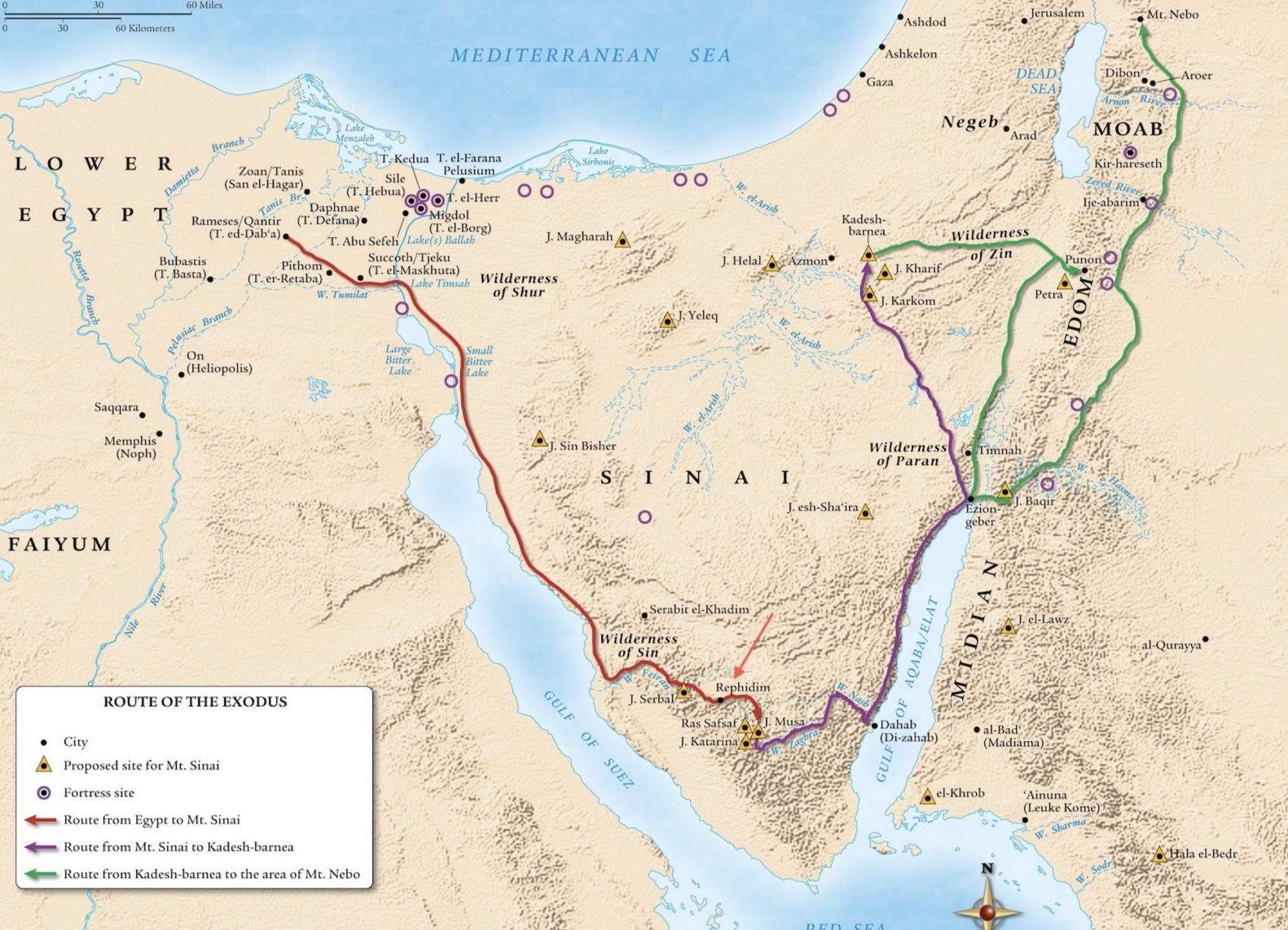
The Exodus, one of the most iconic stories in human history, has captivated the imagination of people for millennia. The tale of the Israelites’ liberation from slavery in Egypt, their journey through the wilderness, and their eventual arrival in the Promised Land is not only a cornerstone of Jewish and Christian faith but also a narrative that resonates with people from diverse cultural and religious backgrounds. Over the centuries, scholars, historians, and archaeologists have sought to unlock the secrets of the Exodus and trace the footsteps of the Israelites on their momentous journey.
The biblical account of the Exodus, found in the Book of Exodus in the Old Testament, provides a vivid description of the Israelites’ experiences. According to the narrative, Moses, chosen by God as a leader, confronted Pharaoh, the ruler of Egypt, with a series of plagues, eventually leading to the liberation of the Israelites. They embarked on a trek through the wilderness, guided by a pillar of cloud by day and a pillar of fire by night. The journey lasted for forty years, during which the Israelites faced various challenges, received divine guidance and laws, and witnessed miracles, such as the parting of the Red Sea.
One of the key questions surrounding the Exodus is the route taken by the Israelites during their journey. While the biblical account provides some geographical markers, the exact locations have been a subject of debate. Scholars have proposed various theories based on historical, archaeological, and geographical evidence, as well as interpretations of biblical texts.
The traditional route, often referred to as the “Exodus Route,” posits that the Israelites crossed the Red Sea at the Gulf of Aqaba, traveled through the Sinai Peninsula, and entered the Promised Land from the east. This theory is supported by ancient Egyptian texts that mention a group of people known as the “Apiru” or “Habiru,” which some associate with the Hebrews, in the region of Canaan.
Others argue for an alternative route, known as the “Northern Route,” which suggests that the Israelites crossed a shallow lake in the northern part of the Red Sea, known as the Sea of Reeds, and journeyed through the eastern Nile Delta before entering Canaan from the north. Proponents of this theory point to geographical and archaeological evidence that aligns with certain details mentioned in the biblical account.
In recent years, technological advancements and interdisciplinary research have shed new light on the quest to trace the Israelites’ journey. Satellite imagery, aerial surveys, and ground-penetrating radar have been employed to identify potential archaeological sites and features that may be associated with the Exodus. For example, researchers have identified ancient fortresses in the Sinai Peninsula that could have served as waystations for the Israelites during their wilderness sojourn.
Archaeological excavations have also unearthed intriguing findings that offer glimpses into the world of the Exodus. At the ancient site of Kadesh-Barnea in the southern part of the Holy Land, archaeologists have discovered evidence of an encampment from the Iron Age that aligns with biblical descriptions of the Israelites’ stay in the area. Similarly, inscriptions found at sites like Serabit el-Khadim in the Sinai Peninsula indicate the presence of a Semitic-speaking population, potentially providing clues to the Hebrews’ presence in the region.
While the debate surrounding the Exodus continues, the quest to unlock its secrets is not solely focused on geographical and archaeological aspects. The Exodus story has transcended its historical and religious significance to become a powerful symbol of liberation, hope, and resilience. It has inspired social movements, influenced literature and art, and serves as a reminder of the enduring quest for freedom and justice.
Ultimately, the search for the secrets of the Exodus goes beyond mere geographical and historical curiosity. It is a quest to understand the profound impact of the story on human consciousness and the enduring relevance it holds for people of different faiths and cultures.
The Exodus narrative speaks to the universal human longing for liberation from oppression, the pursuit of a better future, and the hope for a promised land. It resonates with those who have experienced slavery, persecution, or displacement, offering solace and inspiration in the face of adversity. It is a reminder that the journey towards freedom is often fraught with challenges, yet fueled by faith, perseverance, and the belief in a divine guiding presence.
Furthermore, the Exodus story serves as a moral compass, conveying timeless lessons about justice, compassion, and the responsibility to care for the marginalized and oppressed. It teaches us to challenge systems of injustice, to confront oppressive powers, and to strive for a world where all people can live in dignity and freedom.
Regardless of the specific route or the historical accuracy of every detail, the Exodus remains a powerful testament to the human spirit and its capacity for resilience and transformation. It is a story that continues to captivate, inspire, and challenge us to reflect on our own journeys, both personal and collective.
As we delve into the secrets of the Exodus, let us remember that the true essence of this ancient narrative lies not only in its geographical and historical dimensions but in its ability to stir the depths of our souls. It invites us to embark on our own metaphorical exodus, to break free from the chains that bind us, and to journey towards a more just, compassionate, and inclusive world.
In the end,
the Exodus is not merely a story confined to the pages of a sacred text. It is an ongoing journey that calls upon us to question, explore, and engage with its timeless themes of liberation, faith, and human dignity. As we unravel the secrets of the Exodus, may we find wisdom, inspiration, and the courage to embrace our own personal exodus, unlocking the transformative power of freedom and hope in our lives and in the world around us.
